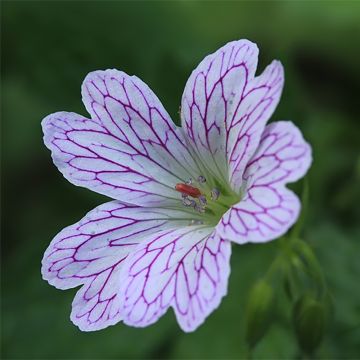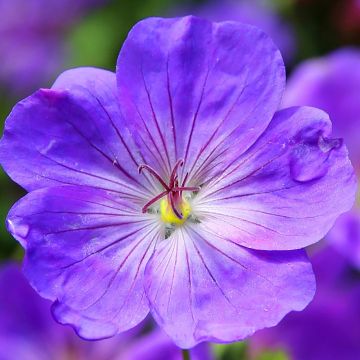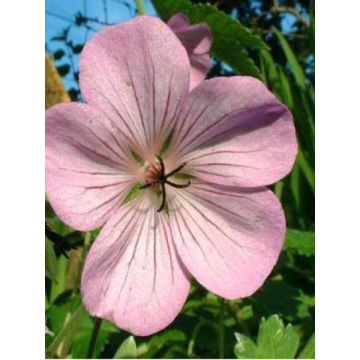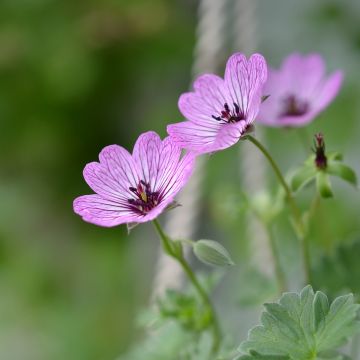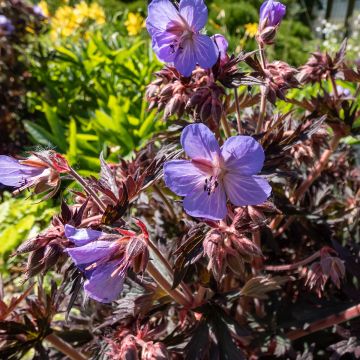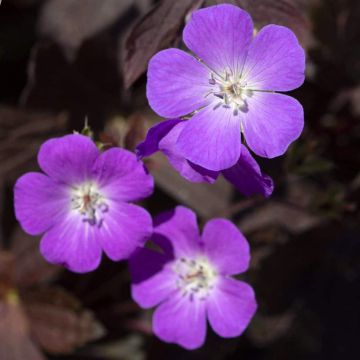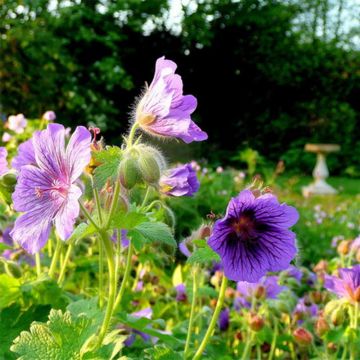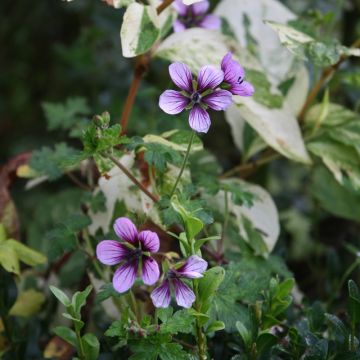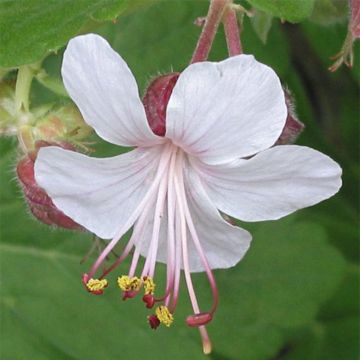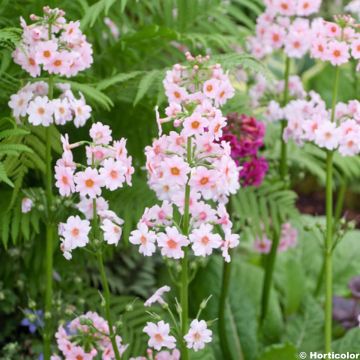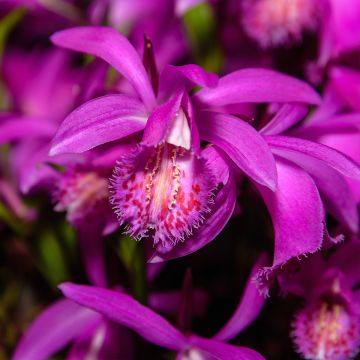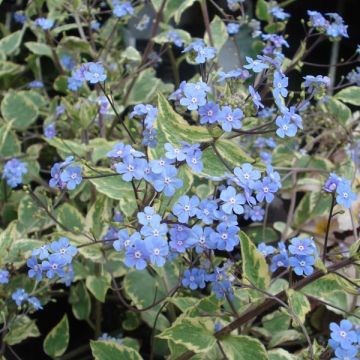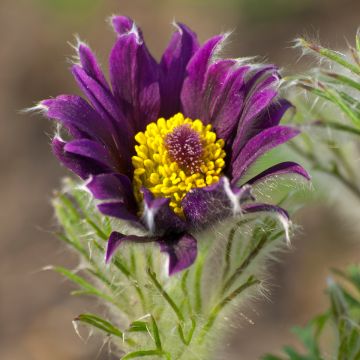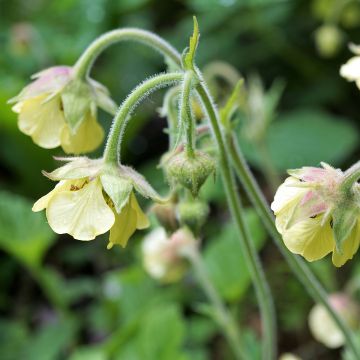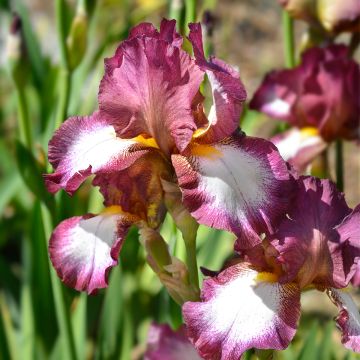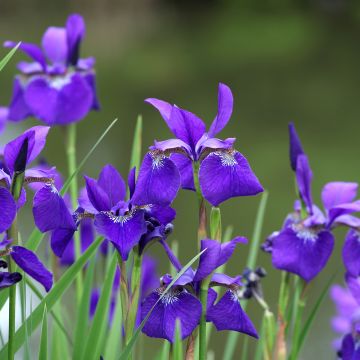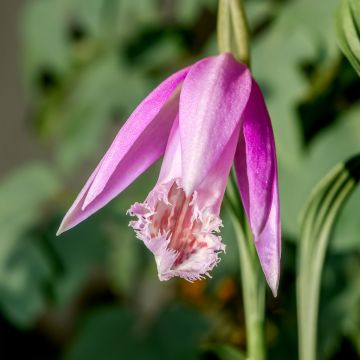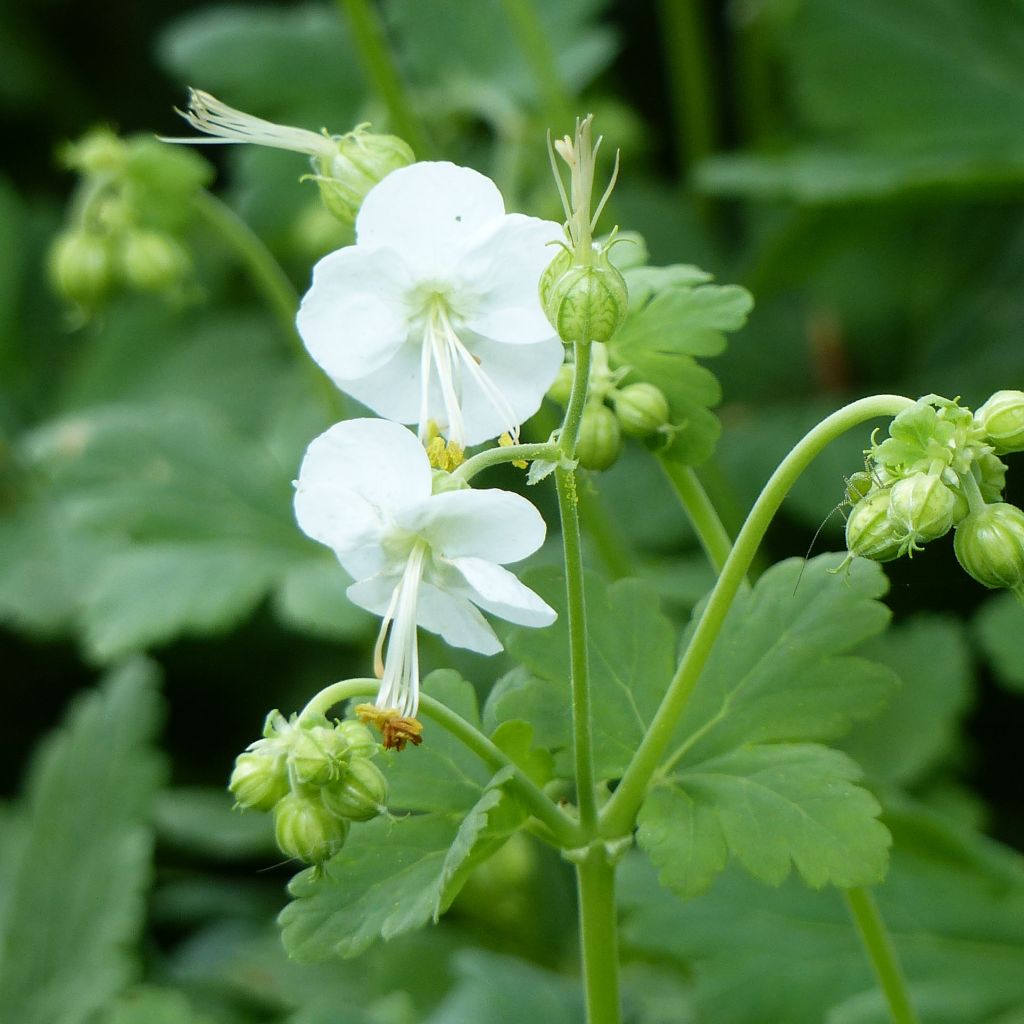

Geranium macrorrhizum White-Ness
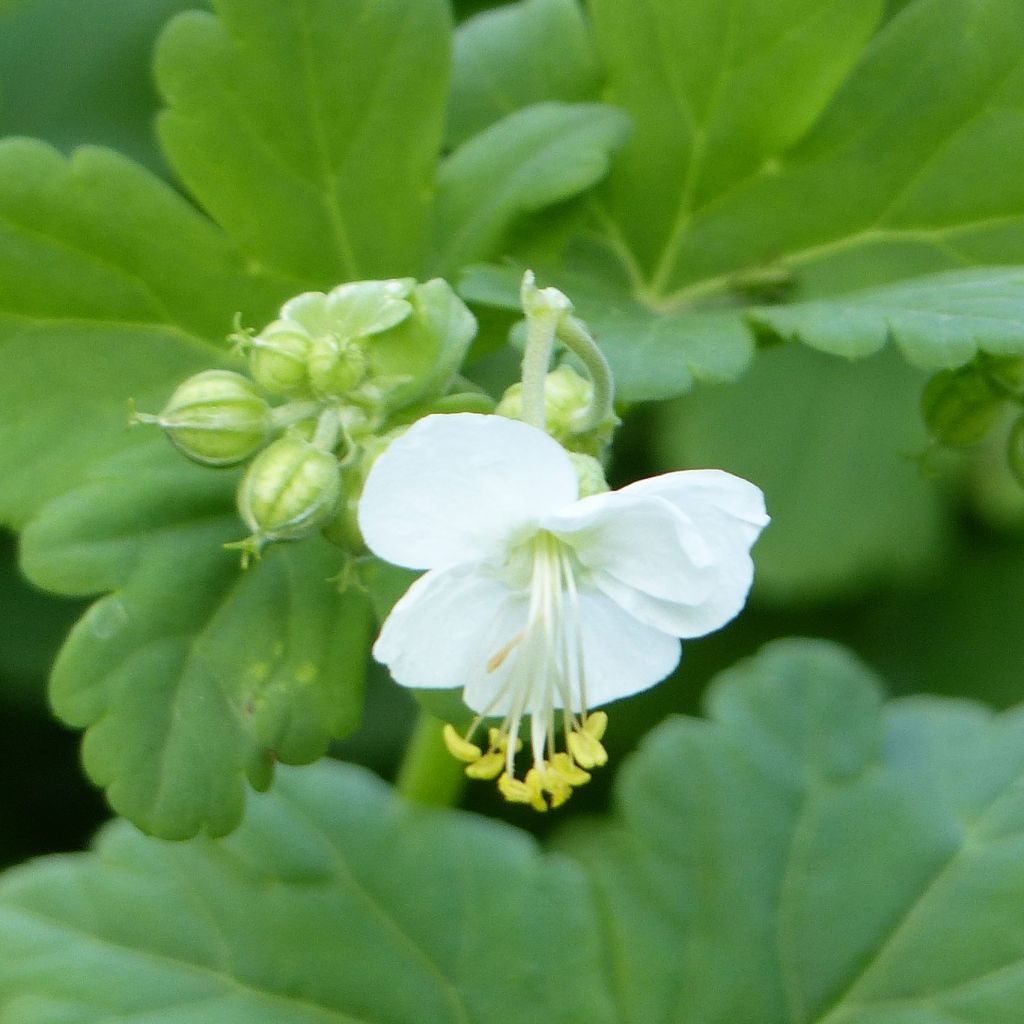

Geranium macrorrhizum White-Ness
Geranium macrorrhizum White-Ness
Geranium macrorrhizum White Ness
Bigroot Geranium, Bulgarian Geranium, Rock Cranesbill, Hardy Geranium
This item cannot be shipped to the selected country
Delivery charge from €5.90
Delivery charge from €5.90
More information
Schedule delivery date,
and select date in basket
This plant carries a 12 months recovery warranty
More information
We guarantee the quality of our plants for a full growing cycle, and will replace at our expense any plant that fails to recover under normal climatic and planting conditions.
From €5.90 for pickup delivery and €6.90 for home delivery
Express home delivery from €8.90.
From €5.90 for pickup delivery and €6.90 for home delivery
Express home delivery from €8.90.

Does this plant fit my garden?
Set up your Plantfit profile →
Description
Perennial Geranium macrorrhizum 'White-Ness' is a very refined ground cover plant for dry shade, with immaculate light green foliage throughout the year. It is truly enchanting in the undergrowth when its flowering occurs in early summer, as it raises clusters of pure white small flowers above its foliage. Finer and less prolific than the type species, it has the same downy and rounded foliage, very aromatic and slightly sticky. Irreplaceable in shaded areas, it grows in almost all types of soil, including the roots of trees and shrubs, and withstands the harshest winters. It can also be grown in pots on the terrace.
Also known as Bigroot Geranium, Geranium macrorrhizum is a rhizomatous herbaceous species native to high-altitude undergrowth in southern Europe. The 'White Ness' variety that originates from it has the same characteristics of habit and foliage, but with less exuberant growth. It forms several rosettes of leaves from a creeping rhizome, creating a spreading clump that reaches 30 cm (12in) in height when in flower, and in a few years forms wide carpets of at least 50 cm (20in). In June and July it is covered with small, pure white, open cup-shaped flowers, with prominent yellow stamens. Its foliage is rounded and deeply lobed, downy and sticky, mostly semi-evergreen, light green, sometimes turning red in autumn and during winter. This perennial, with its root as a storage organ, is particularly adapted to dry soils in the undergrowth. It is a particularly interesting species in neglected areas of the garden, as it prevents weeds from growing.
Geranium macrorrhizum is an excellent plant that every enthusiast should have in their garden due to its ease of cultivation in all regions and the invaluable services it provides in suppressing weeds, in both shade and sun. They look beautiful under deciduous trees and shrubs and are indispensable for quickly filling spaces in borders, alongside paths or in the front of beds with elegance. They are also pleasantly fragrant in warm weather, especially when touched. They are perfect for filling around the base of hedges or roses, and are perfectly hardy.
Report an error about the product description
Geranium macrorrhizum White-Ness in pictures
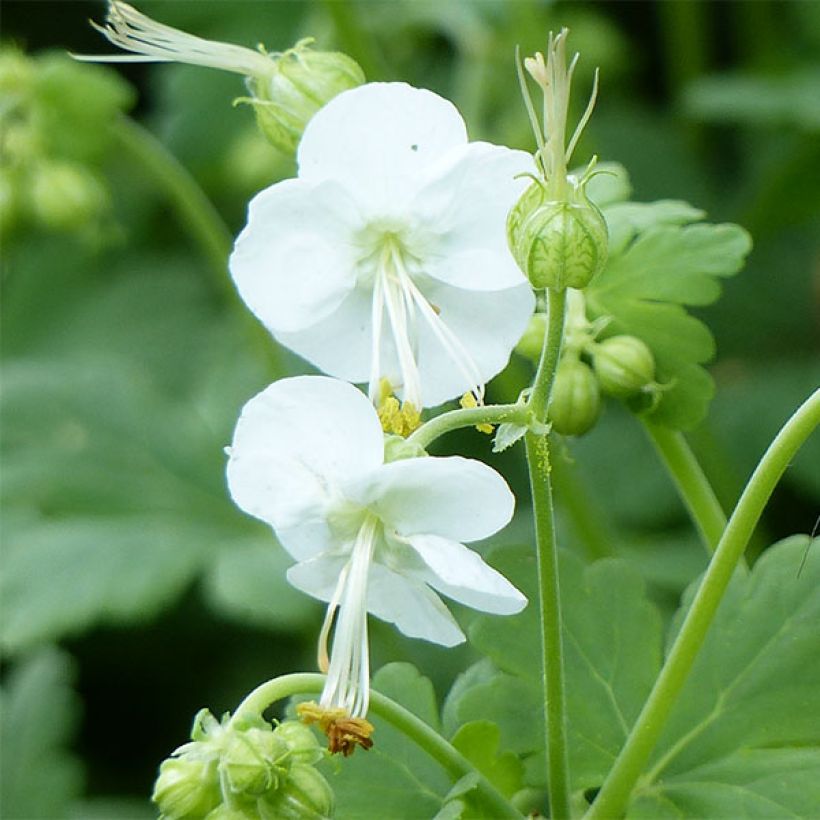

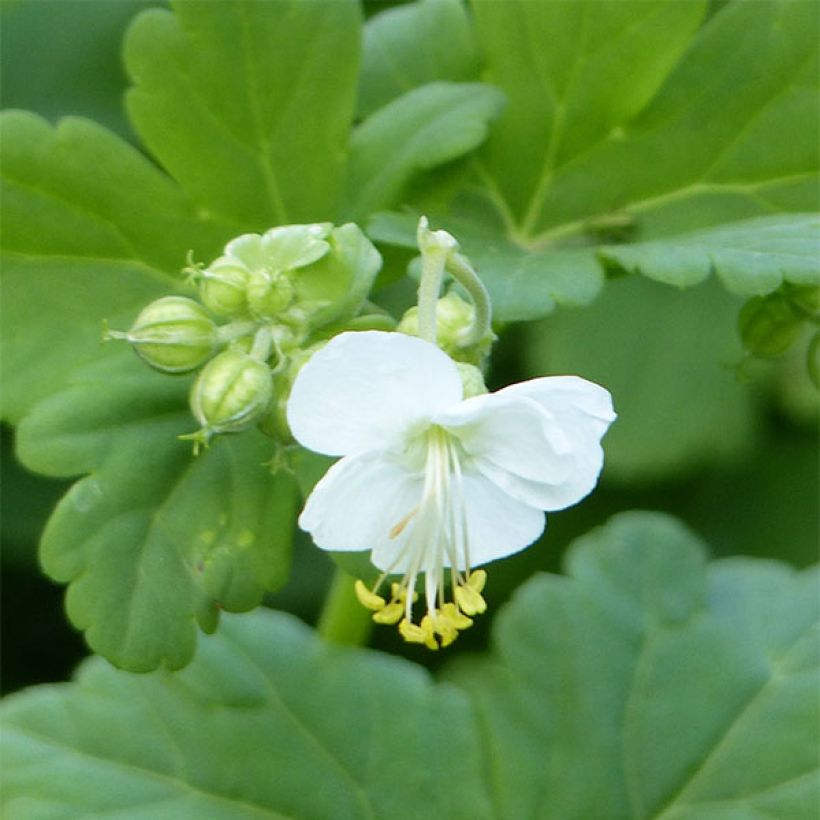

Flowering
Foliage
Plant habit
Botanical data
Geranium
macrorrhizum
White Ness
Geraniaceae
Bigroot Geranium, Bulgarian Geranium, Rock Cranesbill, Hardy Geranium
Cultivar or hybrid
Other Hardy Geranium - Cranesbill
Planting and care
Geranium macrorrhizum adapts to any ordinary, poor or rich soil, from moist to dry in summer, including limestone. It can tolerate full sun but prefers partial shade, especially in hotter regions. It grows well in shade but flowers more abundantly in the sun. It should be planted in early spring or at the end of summer, and watered during periods of summer drought. Geranium macrorrhizum is easy to grow but may take its time to form extensive carpets.
It can also be grown in a pot, but in a partially shaded site. In containers watering should be regular, as this plant appreciates a certain degree of moisture.
Planting period
Intended location
Care
-
, onOrder confirmed
Reply from on Promesse de fleurs
Spring flowering perennials
Haven't found what you were looking for?
Hardiness is the lowest winter temperature a plant can endure without suffering serious damage or even dying. However, hardiness is affected by location (a sheltered area, such as a patio), protection (winter cover) and soil type (hardiness is improved by well-drained soil).

Photo Sharing Terms & Conditions
In order to encourage gardeners to interact and share their experiences, Promesse de fleurs offers various media enabling content to be uploaded onto its Site - in particular via the ‘Photo sharing’ module.
The User agrees to refrain from:
- Posting any content that is illegal, prejudicial, insulting, racist, inciteful to hatred, revisionist, contrary to public decency, that infringes on privacy or on the privacy rights of third parties, in particular the publicity rights of persons and goods, intellectual property rights, or the right to privacy.
- Submitting content on behalf of a third party;
- Impersonate the identity of a third party and/or publish any personal information about a third party;
In general, the User undertakes to refrain from any unethical behaviour.
All Content (in particular text, comments, files, images, photos, videos, creative works, etc.), which may be subject to property or intellectual property rights, image or other private rights, shall remain the property of the User, subject to the limited rights granted by the terms of the licence granted by Promesse de fleurs as stated below. Users are at liberty to publish or not to publish such Content on the Site, notably via the ‘Photo Sharing’ facility, and accept that this Content shall be made public and freely accessible, notably on the Internet.
Users further acknowledge, undertake to have ,and guarantee that they hold all necessary rights and permissions to publish such material on the Site, in particular with regard to the legislation in force pertaining to any privacy, property, intellectual property, image, or contractual rights, or rights of any other nature. By publishing such Content on the Site, Users acknowledge accepting full liability as publishers of the Content within the meaning of the law, and grant Promesse de fleurs, free of charge, an inclusive, worldwide licence for the said Content for the entire duration of its publication, including all reproduction, representation, up/downloading, displaying, performing, transmission, and storage rights.
Users also grant permission for their name to be linked to the Content and accept that this link may not always be made available.
By engaging in posting material, Users consent to their Content becoming automatically accessible on the Internet, in particular on other sites and/or blogs and/or web pages of the Promesse de fleurs site, including in particular social pages and the Promesse de fleurs catalogue.
Users may secure the removal of entrusted content free of charge by issuing a simple request via our contact form.
The flowering period indicated on our website applies to countries and regions located in USDA zone 8 (France, the United Kingdom, Ireland, the Netherlands, etc.)
It will vary according to where you live:
- In zones 9 to 10 (Italy, Spain, Greece, etc.), flowering will occur about 2 to 4 weeks earlier.
- In zones 6 to 7 (Germany, Poland, Slovenia, and lower mountainous regions), flowering will be delayed by 2 to 3 weeks.
- In zone 5 (Central Europe, Scandinavia), blooming will be delayed by 3 to 5 weeks.
In temperate climates, pruning of spring-flowering shrubs (forsythia, spireas, etc.) should be done just after flowering.
Pruning of summer-flowering shrubs (Indian Lilac, Perovskia, etc.) can be done in winter or spring.
In cold regions as well as with frost-sensitive plants, avoid pruning too early when severe frosts may still occur.
The planting period indicated on our website applies to countries and regions located in USDA zone 8 (France, United Kingdom, Ireland, Netherlands).
It will vary according to where you live:
- In Mediterranean zones (Marseille, Madrid, Milan, etc.), autumn and winter are the best planting periods.
- In continental zones (Strasbourg, Munich, Vienna, etc.), delay planting by 2 to 3 weeks in spring and bring it forward by 2 to 4 weeks in autumn.
- In mountainous regions (the Alps, Pyrenees, Carpathians, etc.), it is best to plant in late spring (May-June) or late summer (August-September).
The harvesting period indicated on our website applies to countries and regions in USDA zone 8 (France, England, Ireland, the Netherlands).
In colder areas (Scandinavia, Poland, Austria...) fruit and vegetable harvests are likely to be delayed by 3-4 weeks.
In warmer areas (Italy, Spain, Greece, etc.), harvesting will probably take place earlier, depending on weather conditions.
The sowing periods indicated on our website apply to countries and regions within USDA Zone 8 (France, UK, Ireland, Netherlands).
In colder areas (Scandinavia, Poland, Austria...), delay any outdoor sowing by 3-4 weeks, or sow under glass.
In warmer climes (Italy, Spain, Greece, etc.), bring outdoor sowing forward by a few weeks.

































